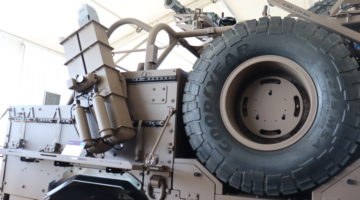News Abstract – A Selection By Franck Rossi – “Investors have lost something of their awe for the U.S. military industrial complex. In an era when the Pentagon is prioritizing new technologies and opening its doors to Silicon Valley firms, legacy contractors can look a bit stuffy—even if they keep getting tons of cash.
Earlier this month, the Senate authorized $778 billion in annual defense spending—which is $25 billion more than requested by President Biden and will allow procurement plus research and development spending to grow 6% over last year’s budget. This cements the Trump administration’s mammoth increase in military expenditures.
Contrary to expectations, though, the political deal hasn’t rekindled investor optimism much. Having lost ground during the pandemic, military stocks are now at their cheapest valuations in eight years…
…competition is also coming from outside the traditional industry ranks: Car maker General Motors, GM +2.33% which re-entered the defense industry in 2017, recently won a $214 million contract from the U.S. Army and wants to capitalize on coming military demand for electric vehicles. As for drones and the new focus on artificial intelligence and software, Silicon Valley upstarts like Palantir, PLTR +3.28% Anduril and Shield AI could gain the upper hand. Technology giants Amazon.com, Google, Microsoft and Oracle have battled for cloud-computing contracts… Byron Callan, a defense-industry analyst at Capital Alpha Partners.
“Legacy companies have not really been able to convince investors that they will be participating in some of these high-growth sectors.” (via the WSJ Appeared in the December 30, 2021, print edition as ‘Military Stocks Do Poorly Amid New Outside Competition.’)
Read Full Article >>> www.wsj.com/articles/how-silicon-valley-and-a-new-pentagon-strategy-are-breaching-the-defense-business
Photo © Ensuper












